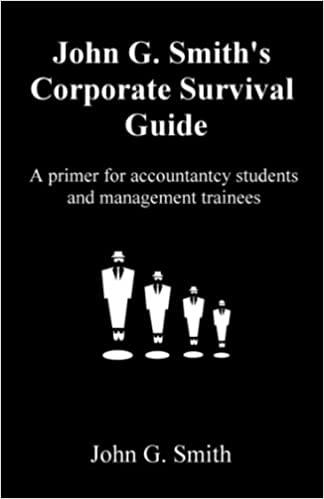How To Read & Interpret A Profit & Loss Account.

Understanding A Profit and Loss Account – look and learn.
It is what’s behind the figures that matters. It is exactly what they do show and what they do not show that is the hardest to learn, because one has to know where to look.
The classical definition of a profit & loss account is a financial statement showing the income of a business and its expenses over a set period, usually one year, and the profit or loss made from trading.
The layout and content of a profit & loss account will vary according to the business carried on but the usual format is to show income first offset by the cost of sales made to produce gross profit. Then the remaining costs of trading will be deducted and usually termed as overheads. The result will be either a profit (excess of gross profit over overheads) or a loss (the opposite).
So far so good. But if you are a student of finance and accountancy and want to rise above just using an automated accounting system to produce the financial statement; let’s say you want to understand the figures and advise a general manager on what they actually mean, then the real task is to get behind each number. Maybe the best approach is to think of the independent analyst who intends to praise or criticise management based on the figures presented.
Preparing a profit & loss account is as much an art as a science. Can you believe in what you see? Is there a canvass underneath? We can take a few tottering steps along the road to understanding what the profit & loss account has to offer.
Profit & Loss Account Entries – Income
The first entry on any profit & loss account will be the income of the business. This income is derived from sales and so it may well be called just that. It may also be styled “turnover” which is a bit more of a technical term meaning the extent to which the working capital or resources of the business have been used, or turned. No matter they are the same thing but note that “revenue” can also be used especially if it is a service type business. Revenue is a confusing expression best not used to describe sales for reasons set out in the e-book “debunking the balance sheet” and available to purchase from this website. A professional firm may well refer to its sales as fee income. The main point is that the statement is telling the reader what the business has earned from invoiced sales in the period covered.
Now for the “take care” bit. Income is what has been charged to the customers exactly for goods or services provided in this period. By this is meant “delivered or rendered”. It should exclude any taxes attached to sales such as the UK value added tax or the US sales tax. This tax is taken from the sales invoice at the outset and put in a tax control account sitting in the balance sheet waiting to be paid to the tax authority. The declared income should also exclude trade discounts since they will arise as an agreed feature of a trading relationship and in fact the list price or catalogue price or rack rate or whatever, never really exists as far as true turnover is concerned. So, look out for “trade discounts” as a cost of sale or as an overhead item. It means the sales value is inflated. Any cash discounts are normally included in the sales value on the basis that they may or may not be earned. If they are earned by the customer paying promptly, this reduction in what has been paid will appear as a cost in the profit & loss account.
The point about “in this period” is extremely important. Think about the holiday company to whom you have paid your deposit or indeed final balance ahead of the travel time, think of the carpet supplier to whom you had to give a deposit before he will order the goods, think of the supplier who demands 50% on a pro-forma invoice before he accepts your order. There are many other examples. The income of those potential suppliers to you may not relate to the profit & loss period you are looking at but to a future period when the goods are delivered or the service is rendered. Normally the test is when ownership of the item changed hands and that is usually on delivery. Trade and custom does play a part but find out if any of these practices are normal in this type of business. If it is, look for “cash-in-advance” or some other titled credit balance in the balance sheet. Be wary if you cannot find it. Large construction works involving stage payments are notoriously difficult to test.
Profit & Loss Account Entries – Cost of sales
The idea behind the term cost of sales is to charge against income those costs that would not have been incurred had those specific sales not been made. This negative is the most elegant way to think of what should be in this category. If the costs would be there even if no sales were achieved, then they ought to be regarded as overheads, that is something that has to be paid for whether the business thrives or dies.
The cost of what is sold is the purchase of materials and services that went into the creation of the product made or service rendered. Often, the wages of shop-floor operatives and supervisors will be regarded as part of the cost of sales whilst pure office type staff or sales or research teams will not be. It matters little to the analyst unless there is inconsistency from one year to another. It also matters if there is a different treatment across businesses in the same trade. Therefore, when looking at gross profit (sales value less the cost of sales) look also at administrative salaries however they are categorised by function (sales, marketing, accounts etc). Has a reduction in cost of sales wages been offset by an increase in salaries?
The really hard job is to relate the cost of sales made to the actual sales in the period. It may sound easy but in practice it is the hardest job for an accountant to achieve. This is because sales are normally made up of individually small items of value whereas purchases are in bulk. The whole process of conversion is large to small. At any point in time there will be much that has been bought or work undertaken that does not yet feature in invoiced sales. Similarly there will be items sold or services rendered for which the business does not yet know the final cost. Matching sales and costs opens up a whole field of work involving product costing, work-in-progress assessment and stock valuation.
Another point to bear in mind is that most business are judged by “gross margin” which is the % that the absolute gross profit bears to sales value. This is so internally, across like type businesses within a sector and not least by the Inland Revenue authorities. It might be in the interests of management to stuff cost of sales in the early years of a business or product at the expense of later so that this action alone sees a gradual improvement in gross margin. The opposite might also be true. When product mix comes into the equation, the task of unravelling the cost of sales made, is complicated further. As a long-stop, always study carefully the value of stocks and work-in-progress shown in the balance sheet. Be on guard if they are rising (the same applies to debtors – sales ok, but are they paying?).
Profit & Loss Account Entries – Overheads
To the novice observer, overheads can be a minefield. Even with an automated accounting system when everything balances perfectly, the experienced accountant or management generally can play many tricks. The real test is do these costs relate to this period and only to this period, are they actually real or imagined, have costs been tucked away to await a better next year, have they been overstated to reduce profit or increase losses? Are we dealing with reality? Are all the customers good for what they owe, is the expression of how the assets have depreciated over this period, fair?
To help find padded out costs, look at the list of detailed creditors to find “accruals” or some similar expression. This list will be attached as a note to the main heading in the balance sheet. To help find costs removed, look for “prepayment” amongst the note on the debtor balances. Other titles such as “provisions”, “reserves”, “allowances”, “advances”, “payments in advance”, “payments in arrears” might all be perfectly correct. But also they might not be.
Conclusion
Always look at and learn from a profit & loss account. Never take it at face value. Be critical, be cynical, be analytical. A clean sign off by the external auditor would be nice but form your own view anyway.
jgs- 2009



